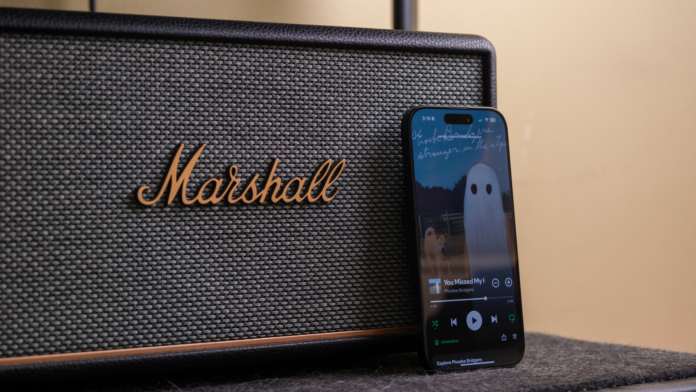Ryan Haines / Android Authority
I love my Google Nest Mini. In fact, I have a couple of them sprinkled around my fairly small apartment because I want to ask for a Spotify playlist, set a timer, or ask Google Assistant for the weather whenever I need it. It’s about as smart as I could ask a piece of my smart home to be, and yet I wouldn’t call it my favorite smart speaker — not even if I have both of them and my Nest Hub Max playing in symphony.
Instead, my absolute favorite speaker is smart when it comes to music, but it leaves everything else behind. Here’s why I still think a “dumb” speaker like the Marshall Stanmore III is the smartest way to go.
Plenty of inputs, but save your voice
Ryan Haines / Android Authority
If you’ve ever used a Nest Mini — or a Nest Audio, for that matter — you know that the setup is pretty simple. You can tap the left or right sides to change the volume, ask Google to play a song or playlist from one of several streaming services, or cast audio from your phone to one or more Nest speakers via Bluetooth. At the end of the day, though, that’s about as interactive as they get. They’re simple and efficient, kind of like well-manufactured pop hits.
When I was looking for a speaker that would work just as well with Spotify as it would with my Audio Technica turntable, that limitation meant that my nest full of Nest products was off the table. There was simply no way to guarantee that I could pair my compact, convenient speakers with my record collection, even though my turntable supports Bluetooth playback. So, that little hiccup sent me deep into the rabbit hole of finding the best of both worlds.
Bluetooth is great, but Bluetooth, Aux, and RCA is much better.
Yes, I wanted something that would work perfectly with my turntable, but I also wanted something I could stream to for more than 20 minutes before jumping up and flipping a record. With my tight criteria firmly in hand, I settled on Marshall’s Stanmore III — the middle child in its home speaker lineup — and haven’t looked back. It has Bluetooth, which satisfies my need for streaming, but it also has a 3.5mm aux input (which I haven’t really used) and, more importantly, RCA jacks so that I can wire my turntable right into the back of the speaker — no fiddling with copper wire required.
As it turns out, that input flexibility is exactly what I’ve wanted from a speaker all along. I don’t mind that I can’t give my Stanmore III voice commands because it means I can’t interrupt it, even by accident. Rather than barking out voice commands to a smart speaker that’s always listening for that magic phrase, I’m much happier to toggle from one audio input to the next manually. Better yet, leaving my Stanmore III to handle the music means that when I set a cooking alarm in the kitchen, I don’t have to worry about interrupting my playlist.
Tuned to near-perfection
Ryan Haines / Android Authority
Of course, how a speaker sounds is just as important as how you connect to it — if not more so. Once again, the Stanmore III — a dedicated audio powerhouse — has enough muscle to push my tiny, convenient Nest Minis out of the way. See, with Google’s small smart speakers, the sound out of the box is pretty much what you get. You can tweak the treble and the bass in the Google Home app, but there’s only so much wiggle room with a single 40mm driver.
My Stanmore III, on the other hand, pairs a large 50W woofer with two 15W tweeters for much greater depth than my entire Nest collection can manage. And, when you have a bit more musical muscle to work with, fine-tuning your audio output is much easier. Like the Nest Minis, you can modify the treble and bass of the Stanmore III via the Marshall app, but you can also change them by twisting a series of knobs (there’s a third one for volume) on the top of the speaker.
Tuning a large, multiple-output speaker goes much further than a tiny Nest Mini.
And yes, that means that I’ve cranked the volume and bass up to the maximum once or twice to see what my speaker can do. My teeth have not stopped chattering since — it’s almost too powerful to listen to comfortably. You should still do it for the experience, but be very, very mindful of your neighbors when you do so.
There is, however, one problem with fine-tuning the Stanmore III — it doesn’t seem as though I can easily save my equalizer settings. I would love to have an option in the Marshall app that would allow me to hang onto a few different profiles for easy access later on, but instead, I have to set and reset the balance each time I switch genres or inputs, which happens as many as a few times per day. If you’re planning to stick with either Bluetooth or RCA most of the time, you might be just fine with a single EQ, though.
What speakers do you use when listening to music? 101 votes Smart speakers (Google Nest, Apple HomePod) 36 %




